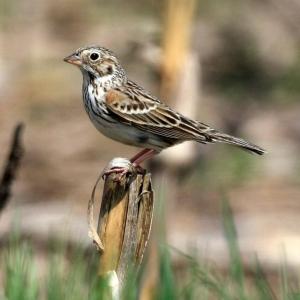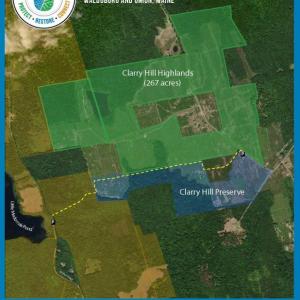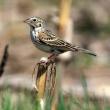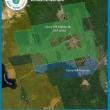An Extraordinary Opportunity to Help Maine’s Grassland Birds
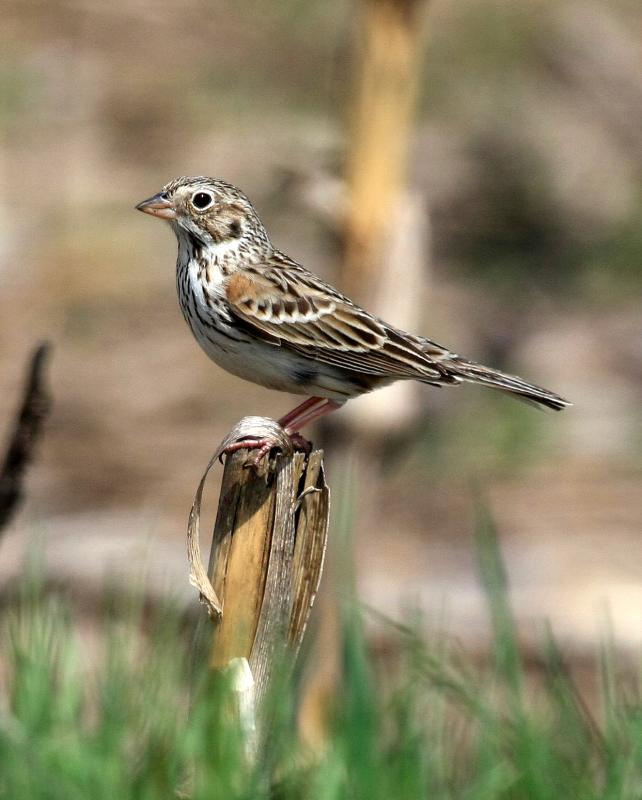 The vesper sparrow is one of the specialists of the increasingly rare blueberry barren habitats here in Maine like those on Clarry Hill, which the Midcoast Conservancy is trying to raise funds to protect. Photo by Tim of Ithaca courtesy of Wikimedia Commons.
The vesper sparrow is one of the specialists of the increasingly rare blueberry barren habitats here in Maine like those on Clarry Hill, which the Midcoast Conservancy is trying to raise funds to protect. Photo by Tim of Ithaca courtesy of Wikimedia Commons.
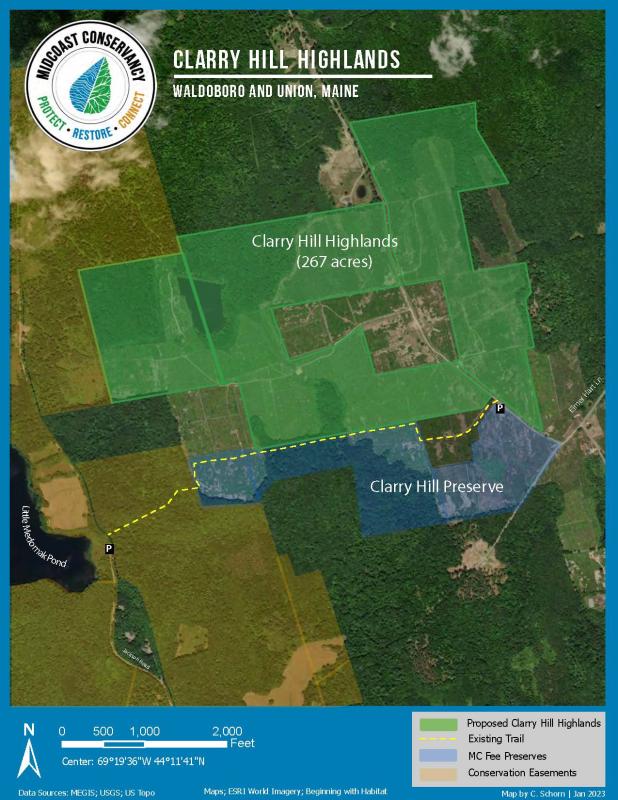 Map of Clarry Hill and the parcels that Midcoast Conservancy is working to protect with your help.
Map of Clarry Hill and the parcels that Midcoast Conservancy is working to protect with your help.
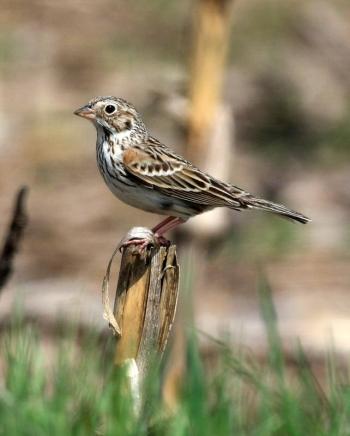 The vesper sparrow is one of the specialists of the increasingly rare blueberry barren habitats here in Maine like those on Clarry Hill, which the Midcoast Conservancy is trying to raise funds to protect. Photo by Tim of Ithaca courtesy of Wikimedia Commons.
The vesper sparrow is one of the specialists of the increasingly rare blueberry barren habitats here in Maine like those on Clarry Hill, which the Midcoast Conservancy is trying to raise funds to protect. Photo by Tim of Ithaca courtesy of Wikimedia Commons.
 Map of Clarry Hill and the parcels that Midcoast Conservancy is working to protect with your help.
Map of Clarry Hill and the parcels that Midcoast Conservancy is working to protect with your help.
Maine is famous for its blueberries. Those small, deep-blue spheres have a sweet, rich, and earthy taste that seems to somehow capture the deep history of where they come from: barren lands taken over by tenacious and hardy plants as the glaciers melted away many thousands of years ago. Blueberry barrens in the last century have been maintained through fire and mowing to encourage lowbush blueberries, a shrubby plant with a stature of 10 or 12 at best but that can produce tight clumps of tiny fruit that turn the rocky fields blue in good years.
Blueberry barrens are becoming increasingly scarce on the Maine landscape. Historically they were already confined to the relatively few places where the conditions are just right for low blueberry plants. In modern times, land management (often including carefully controlled fires and mowing) has kept the fields from growing up into forests. In recent decades, housing developments, changes in the blueberry industry, and other factors have led to the loss of more and more of these acres of blue.
The habitats that are blueberry barrens are also home to a suite of special—and increasingly rare—birds and other wildlife as well as plants. Species like the upland sandpiper, a large-eyed, small-headed sandpiper whose distinctive wolf-whistle (sweEET-WHEEeer) is given from high above the ground as it flutters in display. There was a time when these birds occurred widely in hayfields and blueberry barrens across the state. Now, in the southern part of Maine, there are only a handful of places left where they still occur.
Vesper sparrow, a large sparrow with white outer tail feathers, chestnut-patches on the wings (hence one of its very old names, the “bay-winged bunting”), and a propensity to sing vigorously in the evenings (“vesper” means “evening” in Latin), is another specialist of blueberry barrens. In southern Maine, it, too, can be found nesting at only a few scattered locations. Even the savannah sparrow, a short-tailed species with a buzzy tsee-tsay song that we used to think of as ubiquitous across hayfields and other open habitats in the state, is harder and harder to find these days.
These are a few reasons why the recent announcement by the Midcoast Conservancy of a project to protect 263 acres of the famed Clarry Hill Highlands—one of the last blueberry barrens in the Midcoast region—is so critically important. When this extraordinary property, with its sweeping views of Camden Hills and Muscongus Bay, was recently put on the market, it seemed destined to be lost to yet another cookie-cutter subdivision or perhaps a McMansion, and with it, yet more acreage that is so important for grassland birds.
Thankfully, the Midcoast Conservancy was able to negotiate a deal that placed the property within reach, providing enough people can step in to help save it. But time is of the essence: the project requires funds to be raised by the end of summer 2023. Saving this parcel of Clarry Hill would add to those beloved pieces of Clarry Hill that have already been protected thanks to the Land for Maine’s Future program, supported by the Natural Resources Council of Maine, which you can read about at the NRCM website.
Clarry Hill, if you’ve never been lucky enough to visit, is a spectacular blueberry barren atop a hill split between Union and Waldoboro. As a crow flies it is three miles east of the well-known Morse’s Sauerkraut and two miles west of the Union Fairgrounds. Generations of birders attending Audubon’s Hog Island camp were taken there each summer to see and hear birds like upland sandpipers, vesper sparrows, and savannah sparrows. Sadly, except for occasion migrant stop-overs, upland sandpipers have not been confirmed breeding there in the last few years but vesper sparrows and savannah sparrows can be see from April onward through the fall. It’s also home to many other birds species and is a favorite local hot spot for hawk-watching.
We urge all our faithful readers to consider contributing to this vital campaign to protect one of the last of the rarest habitats in Maine. You can find out more at the webpages of the Midcoast Conservancy.
Jeffrey V. Wells, Ph.D., is a Fellow of the Cornell Lab of Ornithology and Vice President of Boreal Conservation for National Audubon. Dr. Wells is one of the nation's leading bird experts and conservation biologists. He is a coauthor of the seminal “Birds of Maine” book and author of the “Birder’s Conservation Handbook.” His grandfather, the late John Chase, was a columnist for the Boothbay Register for many years. Allison Childs Wells, formerly of the Cornell Lab of Ornithology, is a senior director at the Natural Resources Council of Maine, a nonprofit membership organization working statewide to protect the nature of Maine. Both are widely published natural history writers and are the authors of the popular books, “Maine’s Favorite Birds” (Tilbury House) and “Birds of Aruba, Bonaire, and Curaçao: A Site and Field Guide,” (Cornell University Press).

